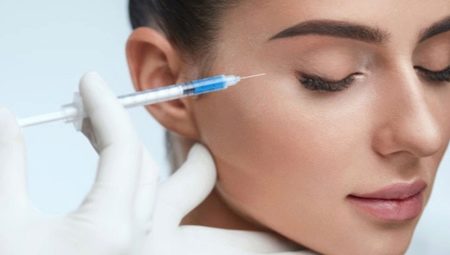What modern women just don’t do to hide signs of skin aging. Often, age-related changes begin with the skin around the eyes. The first folds appear, bags under the eyes, protrusion of fatty tissue. One of the means aimed at solving these problems is non-surgical blepharoplasty. What this is, how the procedure is carried out, what are its varieties, this article will tell.

What it is?
Non-surgical blepharoplasty is an innovative technology to eliminate signs of aging of the skin around the eyes. The technique has several varieties, each of which is aimed at getting rid of wen upper and lower eyelids, wrinkles and other troubles. This is a kind of alternative to rejuvenation by plastic surgery, but in this case, serious intervention is not required.
Unlike surgical methods, the procedure does not have such side effects as distortion of the eye section or the appearance of asymmetry. Several types of procedures allow you to find an individual approach to each patient, choose the most gentle option.
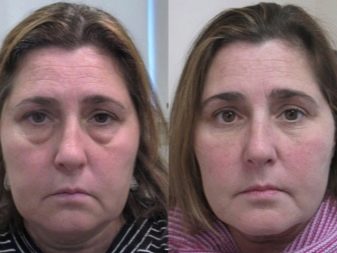
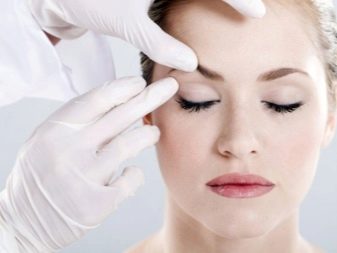
Features
This cosmetic technology is characterized by minimal skin invasiveness. It is painless, designed for skin with a lack of collagen (even thin and sensitive). It can eliminate the severity of wrinkles, smooth them, reduce the volume of sagging dermis. Depending on the variety and characteristics of the patient's skin, it is carried out by means of devices or injections.This allows you to dissolve the fat layer, remove excess fluid, and also regenerate damaged skin layers.
The process is safe, has virtually no complications, is characterized by a short rehabilitation period. After the session, the patient can leave the clinic. Traces of manipulation will disappear in two or three days. In addition, the technique does not need to use anesthesia, and this significantly reduces the risk of harm to health.
The procedure completely eliminates such manipulations as hidden or visible sections. In the process of its implementation, there is no bleeding, as well as infection of tissues. In addition, the procedure allows you to tighten the skin due to the lifting effect.
However, when applying for such a rejuvenation, it is important to take into account age - it is advisable to conduct it up to 45 years.
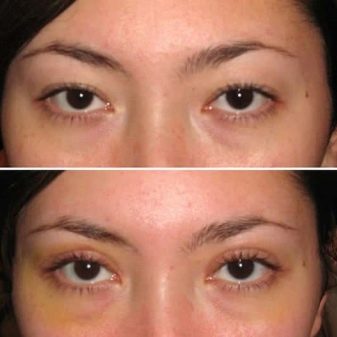
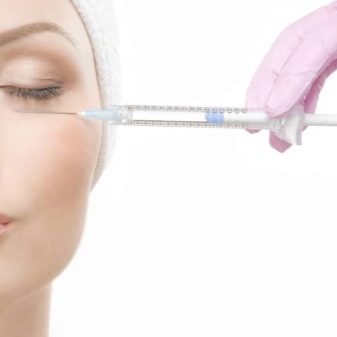
Kinds
All existing methods of blepharoplasty without surgery can be divided into two types: injection and hardware. In turn, each type is divided into several varieties. At the same time, different tools and preparations are used in the work.
Injection
This technology involves the introduction of special drugs under the skin. As a rule, injections are multiple and are located with a certain step. After such procedures, the skin around the eyes is smoothed, becomes elastic and elastic. Depending on the type of exposure, it is possible to achieve a specific effect that is important for the client.
Injections to eliminate excess subcutaneous tissue on the eyelids are performed using injectable lipolysis products. This allows you to increase the permeability of cell membranes, due to which it turns out to act on the fatty layer. As a rule, the main components of such drugs are multivitamins, plant extracts, as well as enzymes. To achieve the desired effect, these fluids are injected deep enough to touch the fat layer itself.
The struggle against swelling and swelling of the eyelids occurs in the same way, which is one of the urgent problems of modern ladies. After rehabilitation, swelling subsides, the soreness of the gaze disappears.
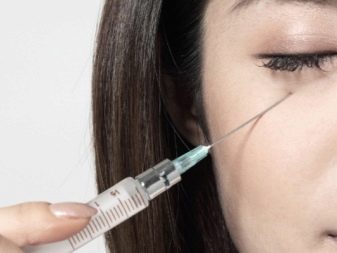

When it is necessary to change the contours of the eyelids and smooth the skin around the eyes, apply the so-called fillers, the main component of which is hyaluronic acid (or hyaluron). This fluid is characterized by high density. When exposed to weak and dehydrated epidermal cells, it promotes the activation of collagen and elastin synthesis. Due to the uniform concentration under the skin, it smoothes it and also promotes a tightening, eliminating pronounced folds.
Any type of injection procedure takes no more than half an hour. In most cases, one session is not enough to achieve and consolidate the effect. The number of procedures is selected by the doctor, at the same time being determined with the intervals between sessions. In some cases, the number of procedures can reach 5-6.
The interval in each case will depend on the characteristics of the skin, its ability to regenerate, the condition of the patient, his health.

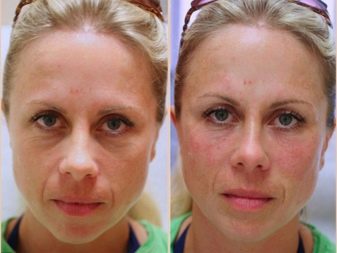
Hardware
This category of non-surgical rejuvenation of the skin of the eyelids includes several techniques.
The most effective are:
- laser;
- ultrasound;
- electric;
- radio frequency;
- thermolifting;
- electromagnetic.
- DROT therapy.
These technologies are classified as non-injection, since they use a special apparatus to implement them. Each method has its own characteristics and the principle of exposure, which allows to achieve the desired effect, excluding plastic surgery.
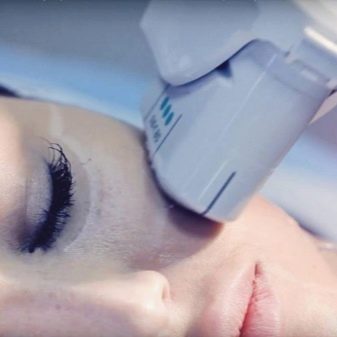
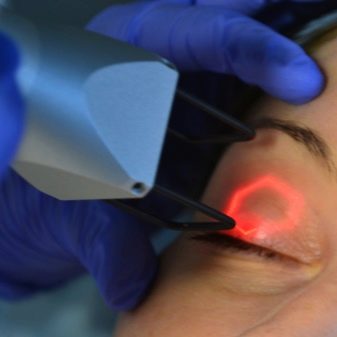
Laser
A non-injection laser technique involves the stimulation of the internal reserve of the body by heating the skin layers. As a rule, the necessary degree of heating is provided by the penetration of the laser into the deep layers of the dermis.The technique gives a pronounced result without injuring the cells. It is safe, does not leave scars, causing collagen and elastin to be produced.
Thanks to this, the skin around the eyes begins to even out. Basically, carbon dioxide or erbium laser is used for such manipulations. The patient can see the pronounced effect after the first session. Processing may take about half an hour. The number of procedures per course is approximately 3-4.
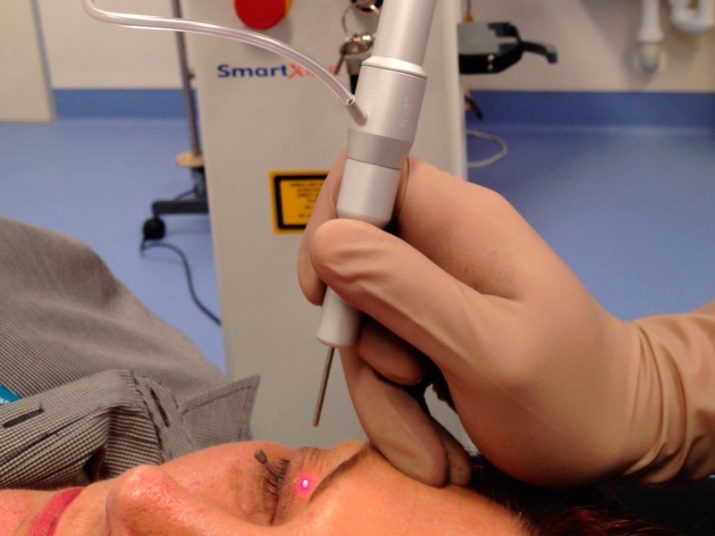
Ultrasound
This technique is also called SMAS lifting of the upper and lower eyelids. Skin rejuvenation occurs due to exposure to ultraviolet rays. During the manipulation, the collagen fibers are twisted, which reduces the muscle frame. Therefore, the skin is smoothed out, getting rid of wrinkles and crow's feet.
Despite the fact that the procedure is not painful, the patient may feel some discomfort during the procedure. In addition to heat when exposed to the skin by ultrasound, the client may feel a slight tingling sensation. The duration of such a procedure by an experienced specialist is no more than half an hour. The number of procedures for one course, depending on the severity of the problem, can be up to four.
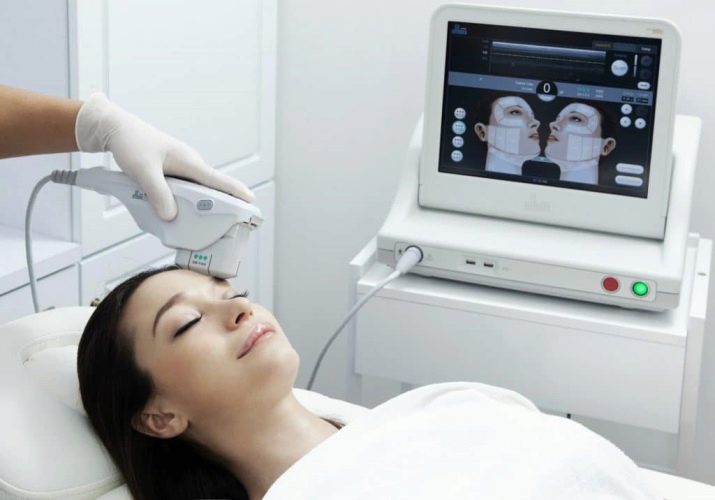
Radio frequency
This technique (thermage) involves exposure to the skin with radio waves. This method of cell rejuvenation is considered one of the safest and most effective. In its implementation, the cosmetologist uses an anesthetic, as the technique can be painful. In time, it is longer, usually about 40-45 minutes.
In terms of effectiveness, the procedure has a profound effect on the skin. Usually it is carried out only 1 time. This is enough to get a lasting and maximum rejuvenation effect.
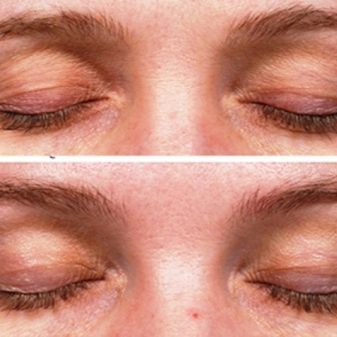
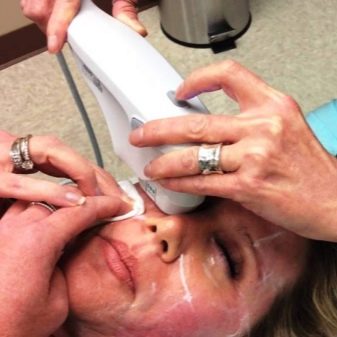
Electromagnetic
This technology is called Raylife. This is an excellent technique to reduce the depth and severity of existing wrinkles around the eyes. It is also effective against hernias, it allows you to get rid of them non-surgical method. One session of such hardware cosmetology takes about 20 minutes.
Electromagnetic waves contribute to the twisting of collagen fibers. This allows the skin to gain firmness and elasticity. As a result of such manipulations, it is smoothed, so the face looks younger.
A pleasant moment of this method is the fact that due to the use of an additional nozzle, a specialist can get to the ciliary edge, which cannot be done with other types of hardware technologies.
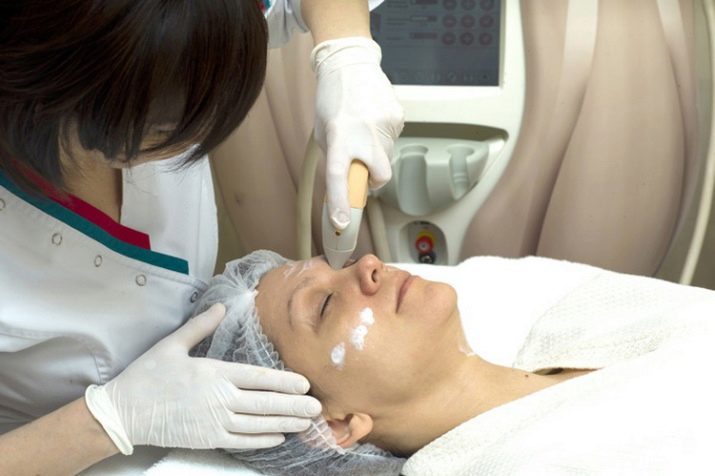
Electroblepharoplasty
In this case, to bring the skin around the eyes in order and restore youth to it, a low-frequency current is used. The principle is based on the fact that during the processing of the skin, certain zones are heated. The session does not need anesthesia. In its effectiveness, this technology is comparable to surgical blepharoplasty. However, unlike her, she has no side effects or complications.
Depending on the severity of the problem, the course can be from 4 to 8 procedures with the required intervals necessary for the complete restoration of cells. Duration of 1 session - no more than half an hour.
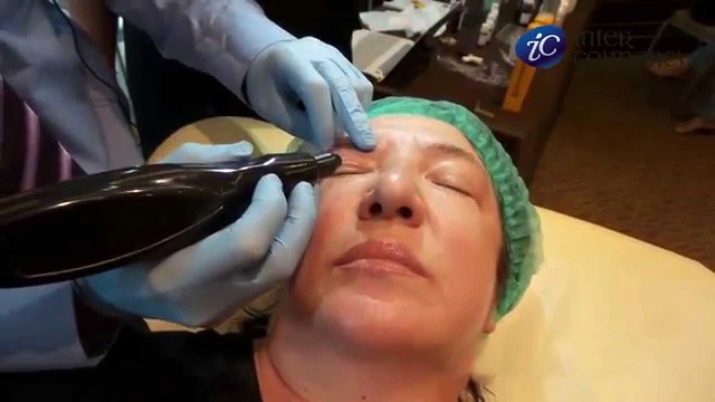
Thermal lifting
In order to stimulate the production of collagen and elastin, in this case the principle of heating is used. There is a normalization of metabolism, activation of cell growth, tissue regeneration. In this case, the effect on the cells is carried out by infrared rays. After exposure to problem areas, the skin gains elasticity and firmness. Dark circles pass around the eyes, swelling decreases, wrinkles become less deep. One session can take from 30 to 40 minutes, for the course it may be necessary from 2 to 6 procedures.
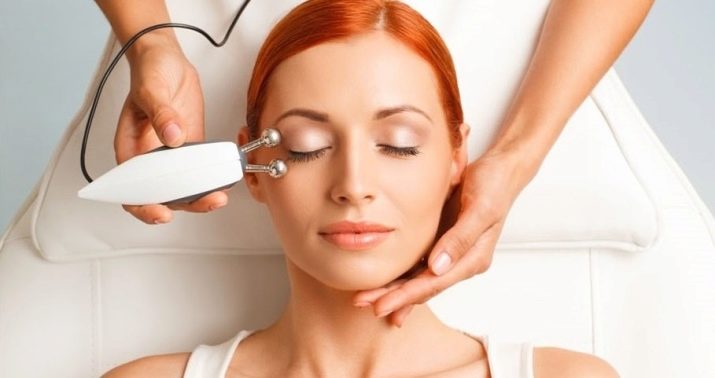
DROT Therapy
This method is characterized by the exact principle of exposure to problem areas of the skin. As with other technologies, it aims to activate collagen production.The course does not require more than two procedures in order for the skin to become supple and resilient. However, the procedure may seem painful, so it is often carried out with anesthesia. You can evaluate the effectiveness after a week from the time of the manipulation.
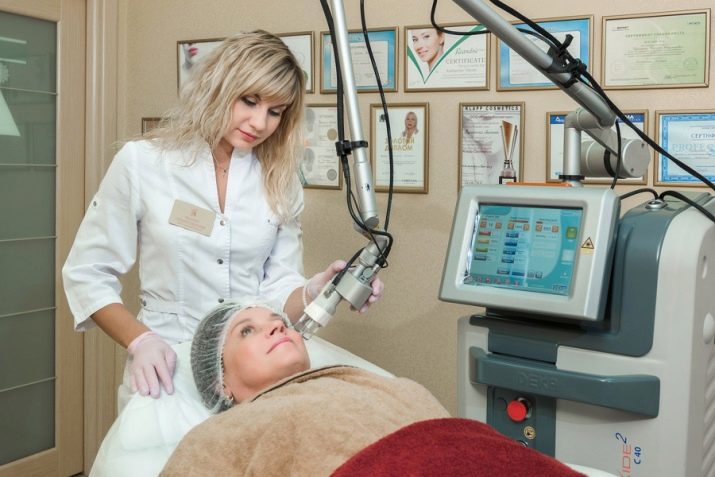
If we compare the duration of the effect, it is worth noting that it can achieve with:
- injection techniques - up to 2 years;
- laser and ultrasonic processing - up to 7 years;
- thermal lifting - about 4 years;
- exposure to low-frequency current and DROT therapy - no more than 5 years;
- Raylife - from 3 to 5 years;
- Thermage - about 5 years.
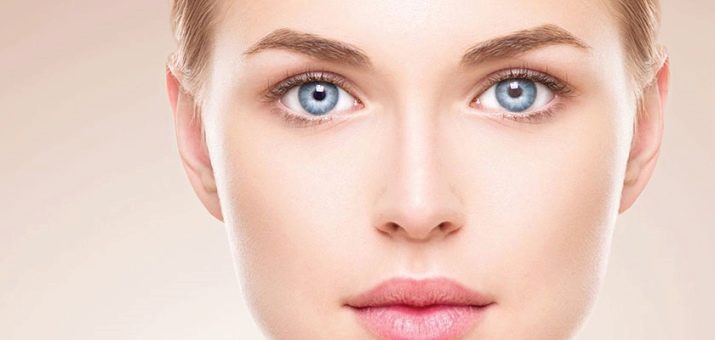
Indications
The main reasons why a specialist can prescribe a similar procedure are:
- epidermal cell dystrophy;
- the appearance of a nasolacrimal groove;
- the appearance of dark circles around the eyes;
- swelling and swelling;
- the need to smooth wrinkled mesh under the eyes;
- ptosis (omission of the upper eyelids);
- lack of moisture in the skin cells;
- fat folds.
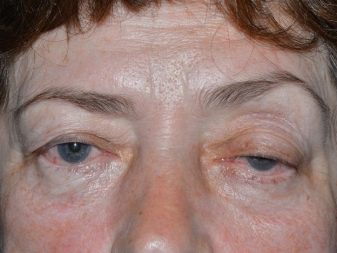
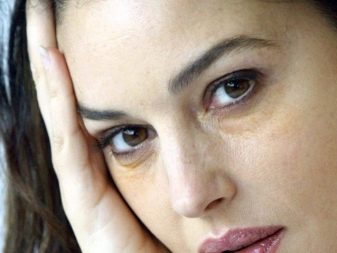
Contraindications
Despite the relative safety, non-surgical blepharoplasty is not always possible.
The main reasons why a qualified doctor will not do it are:
- acute viral infections, including herpes;
- diabetes;
- barley;
- systemic lupus erythematosus;
- spider veins on the skin;
- fragility of blood vessels;
- autoimmune pathologies;
- oncology and hemophilia;
- poor blood coagulability;
- an allergic reaction to the components of the drugs used;
- diseases of the cardiovascular system;
- colds.

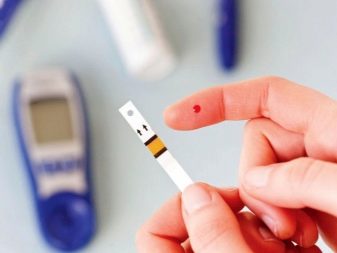
There are also other restrictions. For example, blepharoplasty should not be performed during pregnancy, as well as during breastfeeding and during menstruation. This is due to a change in the hormonal background. As for the "monthly", the first few days after the end of the problem days are considered the best period for the procedure.
Another contraindication is the age category up to 20 years. As a rule, there is no point in blepharoplasty at this age. You can not carry out similar manipulations and patients wearing a pacemaker.

How is it going?
Before proceeding to the rejuvenation itself, the specialist appoints a consultation and conducts a complete medical history. In this case, the presence of allergies, as well as contraindications, is revealed. If the doctor believes that the procedure is possible, he measures and evaluates the thickness of the skin around the eyes. He also finds out the degree of its deformation.
The local technique itself can take place according to different algorithms depending on the variety. But in all cases, before exposure to the skin, it is cleaned. Makeup is removed completely using cosmetic milk or dermatological soap. After that, a special gel with anesthetic effect can be applied to the skin (if necessary).
If laser blepharoplasty is performed, they are protected with special lenses to prevent damage to the eyeballs. Then proceed to the main procedures for rejuvenation. At the very end of the session, the treated areas around the eyes are soothing with cold compresses. In addition, they can be covered with antiseptic drugs to reduce the risk of infection of the patient's body.
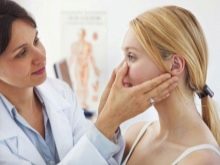
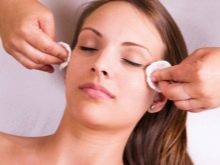

Rehabilitation
The rehabilitation period after such procedures is short, so this does not particularly affect social activity. As a rule, inflammation begins to pass quickly enough. In some cases, slight swelling and redness are possible. Typically, redness begins to subside on the second day. Sometimes small bruises appear.
Swelling that appears immediately is not a complication. This is a skin reaction to an irritant. The doctor may prescribe a special drug that allows you to get rid of it within five to seven days. Sometimes, along with the appearance of edema during the rehabilitation period, the patient has lacrimation of the eyes, the cause of which is the narrowing of the lacrimal canals.In this case, the specialist can appoint a conical probe. Other possible skin reactions include subcutaneous hematomas. Puncture for their removal is rarely required, since usually they pass by themselves.
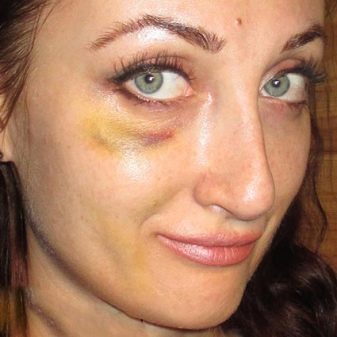
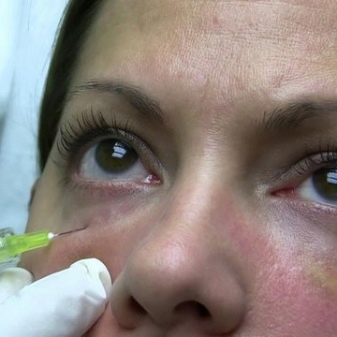
The main rules that accelerate the healing of skin at home, is to protect it from negative environmental factors. It is important to avoid prolonged insolation. If atypical signs appear, you should immediately contact a dermatologist. In the early days, you can soothe the skin with cream.
Washing immediately is undesirable (especially after injection techniques). Until the skin is restored, it is worth excluding a visit to the solarium, baths, saunas and even the pool. When going out, it is advisable to wear a hat. Often during the rehabilitation period, cosmetologists recommend abandoning physical exertion, sudden movements and training, as well as bad habits.
It is important to understand that the rate of rehabilitation will depend on the age of the patient, as well as on the degree of exposure and hormonal levels. In some cases, itching may occur after treatment.
It is important to understand that the less you touch the skin, the faster it will restore its structure. It is undesirable to sleep, with your face buried in a pillow, you can not scratch your eyelids and rub them.
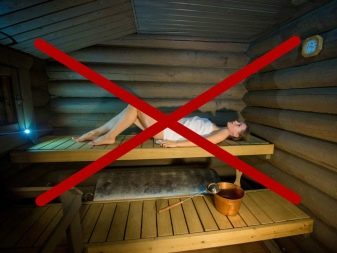
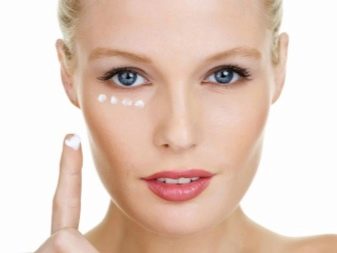
Recommendations
In order for the skin of the treated areas to heal quickly and without complications, experts recommend not using makeup for several days. Do not clog pores and mask the treatment area with foundation or powder. Do not use creams that the patient has not previously used (this can lead to allergies). The first few days from the time of the manipulation it is better to do without dyeing eyelashes, as well as various correctors.
It is necessary to give the skin the opportunity to recover without additional stress. If the eyelids are not inflamed, do not once again treat them with cream. Another thing is when there are redness that does not go away within two days. If swelling progresses at the treatment site, you need to urgently go to the doctor.
For the procedure to be successful, you need to start with the right clinic choice. You can find it by studying the reviews of those who have repeatedly carried out such procedures. It is worth choosing several options available in your region in order to be able to compare the opinions of specialists at the initial consultation. It is also advisable to ask for appropriate permits for such sessions.
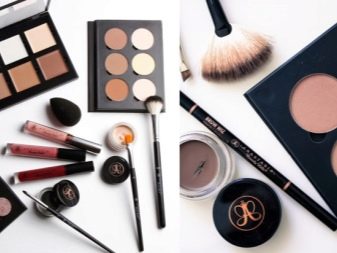

Reviews
Non-surgical blepharoplasty is quite effective. So consider those who did this procedure more than once. It does not completely eliminate wrinkles from the skin, but significantly reduces their number and severity, as shown by photographs of women. Visually, the differences are more than obvious: the bags and puffiness under the eyes are eliminated, the look becomes open and light. Due to this, the face looks rejuvenated and rested.

For a review of non-surgical blepharoplasty, see the next video.
